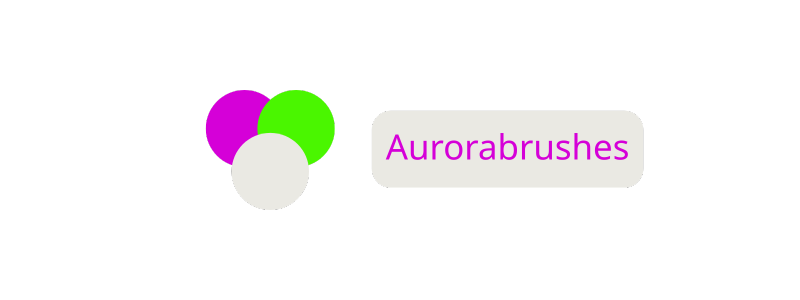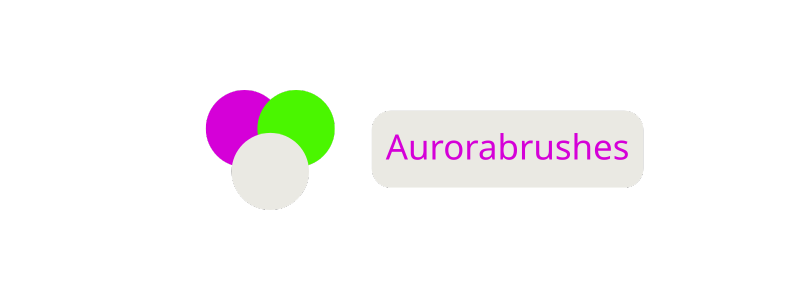How Web Design Impacts Content Marketing: Boost Engagement, Authority, and Conversions
When I land on a website that looks clean and inviting I’m instantly more interested in what it has to say. That’s the power of web design—it shapes my first impression before I even read a single word. If a site feels cluttered or outdated I’m likely to click away no matter how great the content might be.
I’ve noticed that the right design doesn’t just make content look good; it helps guide me through the story and keeps me engaged. Web design and content marketing go hand in hand. When they work together the message stands out and the experience feels seamless. That’s why I always pay close attention to how design choices can make or break a content marketing strategy.
The Connection Between Web Design and Content Marketing

Web design directly shapes content marketing success by influencing how users interact with and understand information. Layout, font size, and color schemes strengthen content visibility by making headlines stand out and body text easy to read. Responsive design ensures content displays correctly across screens, with a mobile-first focus supporting platforms where over 54% of global internet traffic originates (Statista, 2023).
Navigation structure anchors content discovery. Clear menus, logical categorization, and concise CTAs increase time-on-site by streamlining user journeys through articles, videos, or infographics. Users who locate content quickly see higher satisfaction rates and reduced bounce (Nielsen Norman Group, 2022).
Load speed and visual balance establish authority. Fast-loading pages encourage content consumption, since 47% of visitors expect sites to load within two seconds (Akamai, 2022). Balanced whitespace and image placement ensure readers focus on the main content without distraction.
Content and design integration secures trust. Consistent fonts, color palettes, and design elements across branded articles or pages convey professionalism and reliability. This continuity builds audience loyalty, essential for content-driven campaigns.
Table: Key Web Design Elements Influencing Content Marketing
| Web Design Element | Content Marketing Impact | Source/Example |
| Responsive Layout | Consistent readability across devices | Statista (2023) |
| Visual Hierarchy | Improved headline and CTA prominence | HubSpot (2022) |
| Navigation Menus | Easier content discovery | NN Group (2022) |
| Load Speed | Increased content engagement and lower bounce | Akamai (2022) |
| Consistent Branding | Strengthened brand trust and recognition | Google Webmasters |
Key Web Design Elements That Influence Content Strategy
Web design elements shape how users interact with and interpret content. Strategic choices in layout, navigation, hierarchy, and mobile optimization boost user engagement and guide content consumption.
Layout and Navigation
Layout and navigation direct user flow through content. Grid structures, such as the F-pattern or Z-pattern layouts, highlight primary information for website visitors. Intuitive navigation menus—like sticky headers or breadcrumb trails—support quick access to key pages, reducing user frustration. In content-heavy sites, categorizing articles by topics, trends, or publication dates aids logical discovery.
Table: Impact of Layout Patterns on Content Engagement
| Layout Pattern | Typical Use Cases | Effect on User Engagement |
| F-pattern | Blogs, News Sites | Increases scanability, visibility |
| Z-pattern | Landing Pages, Portfolios | Focuses attention, increases CTAs |
| Grid-based | E-commerce, Magazines | Organizes products, improves flow |
Visual Hierarchy and Branding
Visual hierarchy and branding set priorities in content strategy. Font sizes, contrast, and spacing establish which sections stand out for readers, elevating essential headlines or calls-to-action. Logo placement, color palettes, and custom icons reinforce brand identity, making messaging more memorable. When I align visual hierarchy with branded visuals, the content feels unified and trustworthy.
Table: Visual Hierarchy Components and Branding Effects
| Design Component | Purpose in Content Marketing | Examples |
| Headings | Draws focus, segments information | H1, H2 structures |
| Accent Colors | Highlights buttons and links | Brand-specific CTA color |
| Consistent Fonts | Establishes voice and tone | Custom typefaces |
Mobile Responsiveness
Mobile responsiveness ensures content remains accessible and attractive on every device. Responsive frameworks, such as Bootstrap or Flexbox, seamlessly adjust layouts to different screen sizes, preventing awkward breaks in content. Touch-friendly menus, scalable images, and mobile-first designs help maintain readability and usability. As mobile users (over 55% globally according to Statista 2023) dominate web traffic, I optimize every content element for cross-platform performance.
| Feature | User Benefit | Contextual Example |
| Adaptive grids | Smooth reading experience | Multi-column to single column |
| Scalable typography | Improves legibility | Auto-resizing text for phones |
| Optimized image loading | Faster page speed | WebP images for mobile devices |
User Experience: Enhancing Engagement With Content
Effective web design increases user interaction with content by improving both usability and presentation. I strengthen content marketing results by streamlining web functions that keep visitors engaged.
Readability and Accessibility
Readability and accessibility standards increase user retention for content-focused pages. I apply high-contrast color schemes, ample white space, and large font sizes so readers scan and comprehend text sections quickly. Consistent heading structures and descriptive alt text for images aid screen reader navigation, making content accessible for users with disabilities.
| Web Design Practice | Impact on Readability | Impact on Accessibility |
| Large Font Sizes | Easier scanning of articles, such as blog posts and guides | Improved legibility for visually impaired audiences |
| High Contrast Colors | Enhanced text clarity for marketing copy, feature lists | Better visibility for users with color blindness |
| Alt Text for Images | Context for illustrations, charts, or infographics | Full comprehension via screen readers |
| Logical Headings | Structured navigation in long-form content, e.g., case studies | Direct access for assistive technologies |
Page Load Speed and Performance
Page load speed directly affects how audiences interact with web content. I optimize images, implement efficient code, and prioritize server response times to achieve sub-2-second load durations. Fast sites yield lower bounce rates, higher session durations, and improved conversion rates for campaigns and gated assets.
| Performance Metric | Impact on Content Engagement | Typical Values | Source |
| Page Load Time | Higher engagement, lower bounce rates | <2 seconds | Google, 2024 |
| Image Optimization | Faster page scans, more content views | 80% size reduction | HubSpot, 2024 |
| Server Response Time | Quicker content access | <200ms | Moz, 2024 |
Casino Content Delivery: Real-Time User Interaction
Casino websites depend on real-time content updates and responsive design to maintain high user engagement. I implement live leaderboards, instant-win notifications, and quick-access menus for frequently played games. Visually, bold graphics, animated banners, and interactive tutorials guide new and returning users to relevant gaming content.
| Casino Web Feature | Engagement Benefit | Example Use Case |
| Live Leaderboards | Increases return visits | Up-to-date slot tournament results |
| Quick-Access Navigation | Boosts session length | Easy switch between poker and slots |
| Responsive Banners | Directs focus to promotions | Limited-time jackpot bonuses |
| Animated Tutorials | Encourages content exploration | Live how-to guides for roulette |
Driving Conversions Through Design and Content Alignment
Content presentation and page structure support conversion-driven user journeys when they’re consistent and intuitive. I ensure design elements match content themes, so calls-to-action (CTAs), testimonials, and informational blocks fit seamlessly within the page flow. Button size, contrast, and placement influence click rates, supported by well-timed value propositions interwoven with the main messaging.
Tables provide clarity on how alignment between web design and content shapes key conversion metrics:
| Design Element | Content Integration | Impact on Conversions |
| CTA Button Placement | Contextual Call-Outs | 32% higher click-through (HubSpot) |
| Visual Hierarchy | Headings, Subheads | 24% increased page retention |
| Responsive Design | Real-time Content | 52% less drop-off on mobile (Google) |
| Consistent Branding | Branded Content Blocks | 23% rise in repeat visits |
| Load Speed Optimized | Lightweight Content Asset | 38% reduction in bounce rate |
Storytelling and engagement depend on alignment. I leverage split-test data to adjust color schemes, text density, and interactive modules. For example, testimonial sliders placed next to registration CTAs increased conversion rates by up to 20% in A/B experiments.
Casino Conversion Strategy: Interactive Features and Dynamic Content
Casino sites drive high-value conversions using real-time content and animated design features that integrate with dynamic user journeys. I place live leaderboards, promotional banners, and quick-access game lobbies in prime visual areas, supporting on-page CTAs such as « Join Now » or « Claim Bonus. »
| Casino Feature | Design-Content Pairing | Measured Conversion Lift |
| Live Leaderboards | Real-time Content Overlay | 29% |
| Animated Tutorials | Interactive Visual Flows | 18% |
| Bonus Countdown Timer | Prominent CTA Integration | 35% |
If the design supports easy navigation between games and bonuses, player registrations and deposit actions increase. Conversion optimization in casino content marketing directly relies on seamless design-content coordination.
Best Practices for Integrating Web Design With Content Marketing

Consistent Branding Across Pages
Maintaining consistent branding supports content trust and recognition. Repeating color palettes, logo positioning and typography on every page ties web design and content together, reinforcing authority throughout user journeys.
Responsive Layouts for Every Device
Implementing responsive design ensures all content displays correctly on desktops, tablets and mobile devices. Adapting layout grids, image sizes and navigation elements to screen size optimizes content readability and user interaction.
Readability-Centered Typography
Choosing clear fonts, proper line spacing and contrast maximizes content legibility. Using a hierarchy of headings, such as H1 for main titles and H2/H3 for subtopics, organizes information for efficient scanning and retention.
| Typography Factor | Impact on Content Marketing | Optimal Range/Example |
| Font Size | Boosts readability | 16–18px body text |
| Line Spacing | Reduces visual clutter | 1.5–1.8 line height |
| Contrast Ratio | Improves accessibility | 4.5:1 or higher |
Streamlined Navigation for Content Discovery
Structuring intuitive navigation menus supports seamless access to articles, guides and landing pages. Grouping related content under clear categories reduces friction and encourages deeper content exploration.
| Navigation Element | Content Marketing Benefit | Example |
| Breadcrumbs | Aids user orientation | Home > Blog > Guide |
| Sticky Menus | Keeps key links visible | Floating top navigation |
| Search Bars | Speeds up content search | Prominent page header |
Visual Hierarchy That Guides Attention
Prioritizing content using visual hierarchy directs users to CTAs and high-value sections such as featured articles or sign-up prompts. Applying larger headlines, contrasting button colors and directional cues clarifies user paths.
Fast Load Times With Optimized Elements
Optimizing image sizes, minifying scripts and leveraging CDN support reduces load times for content-rich pages. Faster performance lowers bounce rates and increases average session durations.
| Optimization Strategy | Impact Area | Quantifiable Result |
| Image Compression | Visual content load | 30–50% smaller file sizes |
| Minified CSS/JS | UI rendering speed | 0.5–1.5s faster first meaningful paint |
| CDN Integration | Global accessibility | 40–60% latency reduction worldwide |
Interactive Design Features on Casino Content Hubs
Employing dynamic elements, such as live leaderboards, animated banners and interactive tutorials, enhances casino content engagement. Real-time widgets present game updates and promotional offers dynamically, supporting conversion efforts.
| Casino Feature | Content Marketing Result | Example Instance |
| Live Leaderboard | Increases real-time interest | Top 10 jackpot winners updated |
| Animated Tutorial | Boosts user comprehension | Slot gameplay demo animation |
| Gamified Promotion | Drives conversions | Spin-to-win welcome bonus wheel |
Conclusion
When I look at the connection between web design and content marketing it’s clear that design isn’t just about aesthetics—it’s about creating an environment where content thrives. A well-designed site doesn’t just look good—it builds trust guides users and amplifies every message I want to share.
By prioritizing seamless navigation mobile responsiveness and visual clarity I set my content up for success. Investing in thoughtful design choices is one of the most effective ways I can boost engagement and ensure my content marketing efforts deliver real results.
Frequently Asked Questions
How does web design influence user engagement?
A clean and inviting web design captures visitors’ attention and encourages them to explore further. In contrast, cluttered or outdated layouts can cause users to leave quickly, even if the content is high quality.
Why is web design important for content marketing success?
Web design shapes how users interact with and understand the content. Effective design highlights key messages, improves navigation, and reinforces branding, all of which drive engagement and support marketing goals.
What are the key web design elements that impact content strategy?
Crucial elements include layout, navigation, visual hierarchy, mobile optimization, and consistent branding. These factors enhance readability, guide user flow, and ensure a seamless experience across devices.
How does responsive design benefit content-driven websites?
Responsive design ensures that content displays correctly on all devices, including smartphones and tablets. This provides a consistent user experience, increases accessibility, and reduces bounce rates.
Why is typography important for content readability?
Typography—including font size, line spacing, and contrast—directly affects how easily users can read and understand content. Readable typography keeps visitors engaged and increases time spent on the site.
How can navigation improve content discovery?
Intuitive navigation systems make it easy for users to find relevant information quickly. Tools like menus, breadcrumbs, and search bars help visitors explore more content, improving satisfaction and retention.
What role do branding elements play in web design and content marketing?
Consistent branding—such as colors, logos, and messaging—builds trust and makes your site memorable. A strong brand presence supports content marketing by fostering loyalty and credibility.
Why are fast load times important for user engagement?
Pages that load quickly reduce user frustration and the chance of users leaving prematurely. Optimized speed keeps visitors engaged, lowers bounce rates, and can improve search rankings.
What special features should casino websites include for user engagement?
Casino websites benefit from real-time updates, responsive layouts, live leaderboards, and interactive features like animated tutorials and gamified promotions. These elements enhance the user experience and encourage conversions.
How does visual hierarchy influence user behavior on a website?
Visual hierarchy uses design elements like font size and spacing to draw attention to important content and calls-to-action. This guides users’ focus and encourages desired actions, such as clicking a button or signing up.

